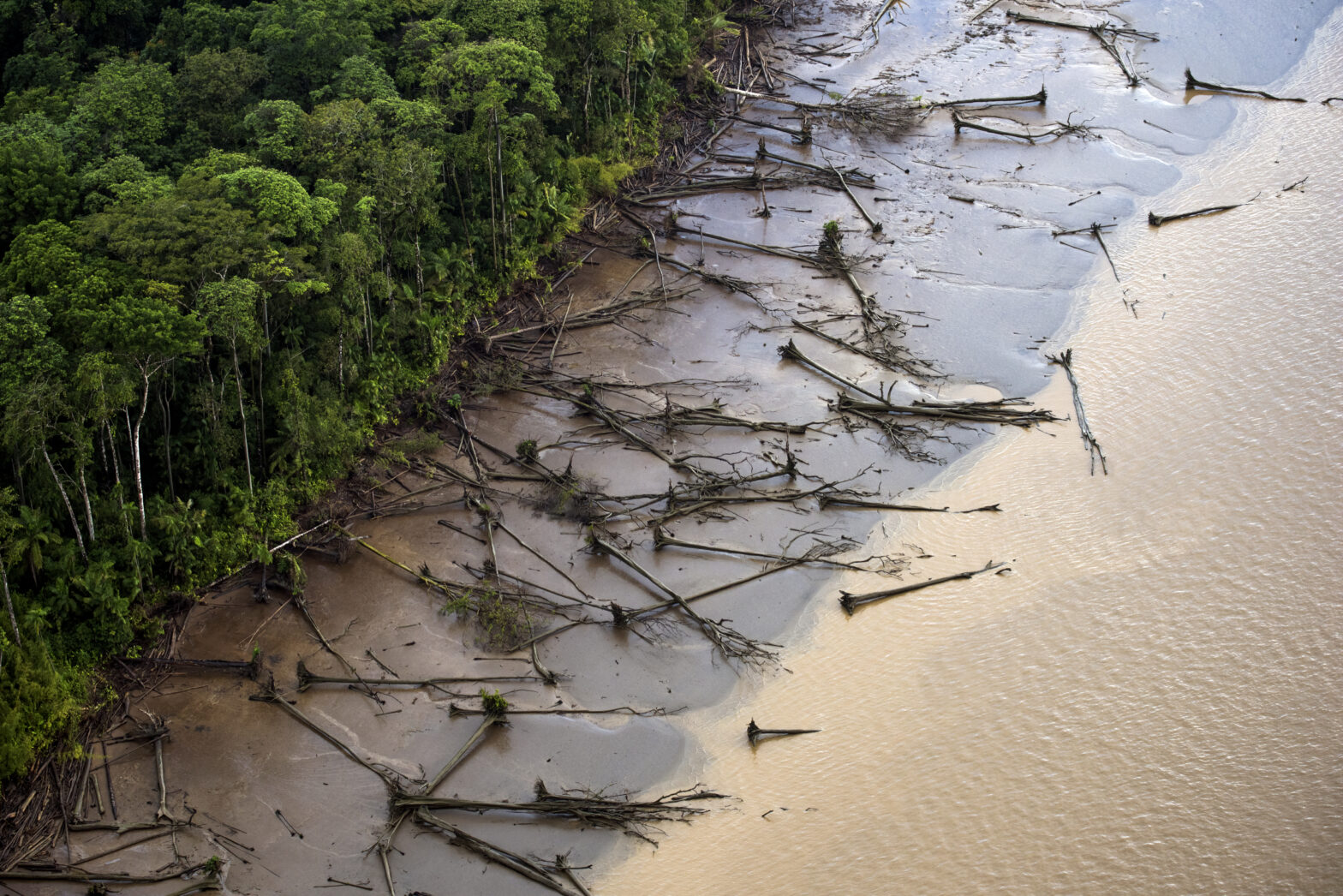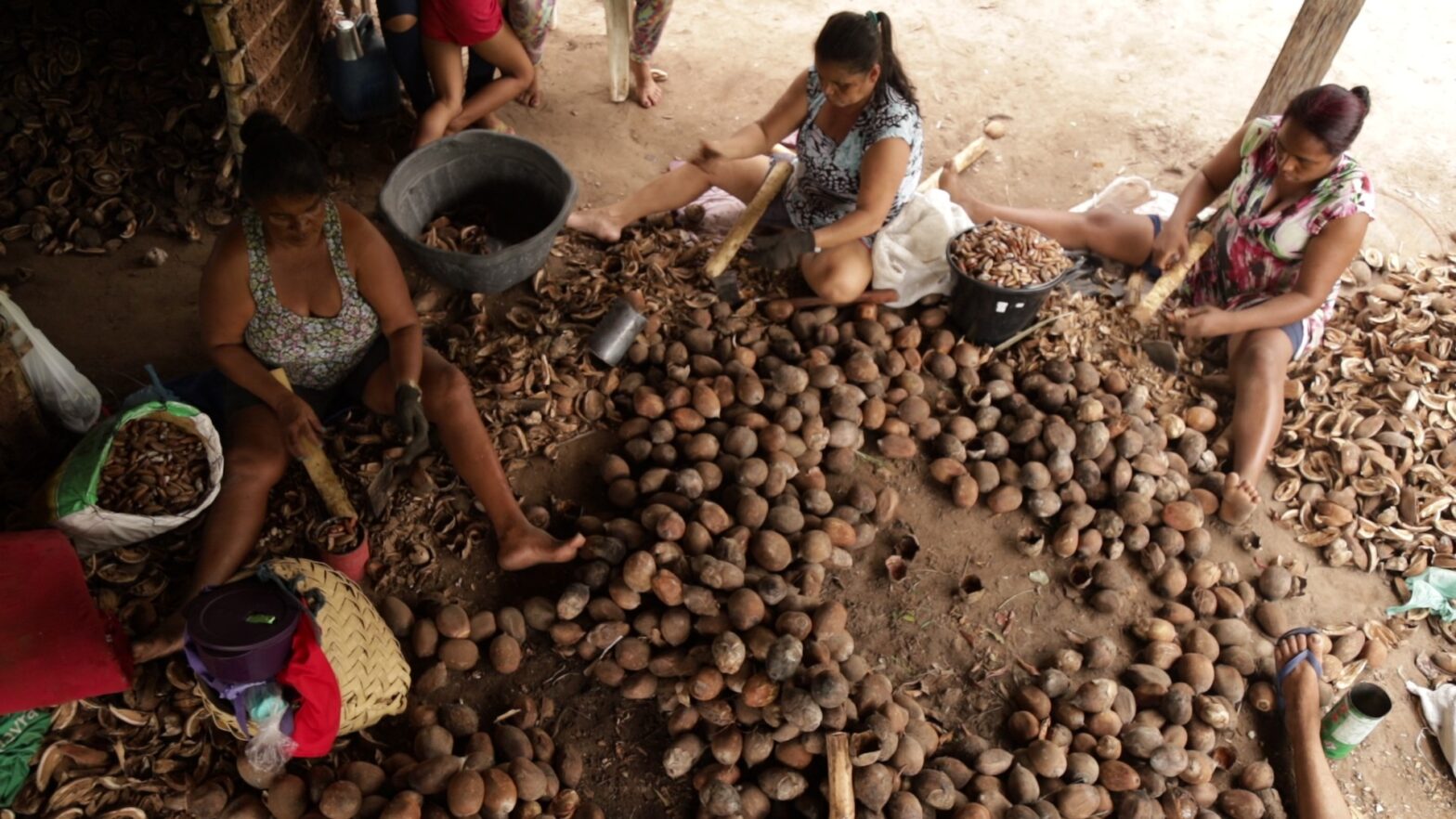The Federal Prosecutor’s Office wants harsher penalties for a gang that killed big cats in the state of Acre. No one has been arrested. In the Amazon, human action kills or displaces about 350 jaguars every year.
Populations of the largest cat of the Americas are threatened even in the world’s largest rainforest. In the Amazon, jaguars are killed and driven away by hunting, trafficking, deforestation, and burning. Researchers point out that human actions damage the conservation of the species in the country.
In November, the Federal Prosecutor’s Office (MPF) asked to review the convictions for hunting animals threatened with extinction and illegal use of weapons in relation to a group of jaguar hunters in Acre. None of the members of the criminal association were arrested. The agency also filed a civil action seeking compensation for damages to biodiversity arising from the killing of animals. Now, the definition of harsher penalties for the group is in the hands of the Federal Regional Court of the 1st Region (TRF1).
Prosecutor Humberto de Aguiar Júnior, from Acre’s MPF, says these accusations present foolproof evidence the convicts organized weekly hunts, sometimes paid by farmers whose livestock was targeted by the jaguars. In 11 instances registered by the Federal Police in just three months, eight jaguars, 13 capybaras, 10 peccary, and two deer were slaughtered. The group attracted the cats with esturradores (instruments that imitate jaguar sounds) and with meat and animal carcasses (a practice known as ceva). The hunters relied on dogs and heavy weaponry. “However, the judge understood that only five hunts were confirmed, even with exchanges of messages organizing the attacks and photos of animals being killed,” he said.
The dentist Temistocles Barbosa Freire, the physician Gílson Dória de Lucena Júnior, the prison agent Gisleno José Oliveira de Araújo Sá, the farmer Gilvan Souza Nunes, and the cowherd Sebastião Júnior de Oliveira Costa were sentenced to pay fines and imprisonment from six months to three years in an open prison regime. The Judiciary worker Sinézio Adriano de Oliveira Júnior and the electrician Manoel Alves de Oliveira were acquitted. Investigations indicate that Themistocles could have killed over a thousand jaguars over three decades.
Environmental crimes generally have low sentences in Brazil. It is difficult to imagine that criminals with this profile will change their behavior if the legislation leads to such mild consequences for their lives. Jaguars are part of Brazilian biological diversity, an irrecoverable treasure if they go extinct.
Humberto de Aguiar Júnior, federal prosecutor.
“Environmental crimes generally have low sentences in Brazil. It is difficult to imagine that criminals with this profile will change their behavior if the legislation leads to such mild consequences for their lives. Jaguars are part of Brazilian biological diversity, an irrecoverable treasure if they go extinct”, highlighted prosecutor Aguiar Júnior. There is no deadline for the judgment of the issue by TRF1, which serves half of the Brazilian states and the Federal District.
The Amazon is still a jaguar bastion
An analysis published in June in the Conservation Science and Practice journal shows that, between 2016 and 2019, 1,422 jaguars were killed or driven away from the places where they lived by deforestation and forest fires in the Legal Amazon. 355 of the animals are affected by year on average. Pará and Mato Grosso, leaders in deforestation and forest fires to form pastures for cattle and soybean crops, were the states where cats were most harmed.
To calculate how many jaguars were affected, scientists used alerts for deforestation and forest fires from the National Institute for Space Research (Inpe) and studies that point to the average of these animals in forests in South and Central America.
1,422 jaguars were killed or driven away from the places where they lived by deforestation and forest fires in the Legal Amazon between 2016 and 2019.
Around 355 jaguars are affected by deforestation every year.
Source: study published at Conservation Science and Practice in june, 2021.
Deforestation in the Brazilian Amazon have risen again since 2015. From August 2020 to July this year, an estimated 13,200 km2 were affected. From January to October 2021, 9,700 km2 have already been deforested, equivalent to over six times the area of the city of São Paulo, a 33% increase in relation to previous year, as demonstrated by the Amazon Institute of Man and Environment (Imazon).
Forest fires in the Amazon have also broken records during the Bolsonaro administration. Over 71,000 hot spots were reported this year. According to MapBiomas, the states of Mato Grosso, Pará, and Tocantins were the ones that burned the most forests and other types of native vegetation between 1985 and 2020.
“The situation is also worrisome in Maranhão and Rondônia, where the displacement of animals to preserved regions is hampered by the little forest that remains outside protected areas. The state of Amazonas, which is more conserved, may serve as a bastion for cats migrating from other regions”, said Jorge Fernando Saraiva, a researcher from the Ecology department at the Federal University of Mato Grosso do Sul and a co-author of the study.
But recent data from Inpe indicate Amazonas has become the second state with the most deforestation in the Amazon, surpassing Rondônia’s historical rank. This account includes the implementation of an agribusiness hub that triggered land grabbing and felling of forests in the south of Amazonas and in neighboring portions of Rondônia and Acre, as shown by InfoAmazonia and PlenaMata.
“This can concentrate animals in certain areas and increase competition and conflicts for food and females, damaging the conservation of the species”, evaluated biologist Emiliano Esterci Ramalho. His studies in the Mamirauá Reserve show that jaguars shelter on top of trees in floods and that, in the dry season, they cover a territory of up to 200 km2 to feed and mate.
Expanding and maintaining protected areas and ecological corridors on public and private lands are measures that can form ‘escape routes’ for cats. Reducing permits for deforestation, strengthening inspection and giving a sustainable use to undesignated public lands in the Amazon are other measures to guarantee the future of jaguars and other species, Saraiva explained.
According to the expert balance published in Conservation Science and Practice, there are about 79,000 jaguars in the Brazilian Amazon. The pressures on the feline are even greater in the rest of the country, where the species is already vulnerable to extinction. The report by the United States Agency for International Development and the NGOs Traffic and the International Union for Nature Conservation showed that the Amazon is a major source and route of wildlife trafficking. Species such as jaguars, turtles, and ornamental fish were the main targets of criminals in the region between 2012 and 2019.
The document contains at least 30 seizures of jaguar parts (mostly furs, but also fangs and paws) in the Brazilian Amazon in just five years. In 2016, Ibama caught heads, skulls, leathers and claws belonging to 19 jaguars in a hunter’s refrigerator in Curionópolis, Pará. The feline is also killed in Suriname, Bolivia, Peru, and other Amazonian countries, including to supply illegal markets in Asian countries.
The jaguar helps maintain the forest, and the preserved forest helps the jaguar recover from these impacts. Therefore, the biggest obstacles to its conservation are the deforestation and fragmentation of the Amazon, associated with the weakening of environmental laws and agencies.
Emiliano Esterci Ramalho, biologist and director at the Mamirauá Institute
Cases like these multiply despite global trade in any jaguar item being vetoed by the Convention on International Trade in Wild and Endangered Flora and Fauna, known as “Cites“, and hunting has been banned in Brazil since the 1960s. The information is from Rio biologist Emiliano Esterci Ramalho, who has lived in Amazonas for almost two decades. Holder of a PhD in Ecology and Wildlife Conservation from the University of Florida, he reinforces that the losses due to persistent hunting added to the destruction of the forest further threaten the future of the predator.
“The jaguar helps maintain the forest, and the preserved forest helps the jaguar recover from these impacts. Therefore, the biggest obstacles to its conservation are the deforestation and fragmentation of the Amazon, associated with the weakening of environmental laws and agencies”, he described.
Ramalho works in the Mamirauá Sustainable Development Reserve (AM), where about a thousand jaguars live, more than in the entire Atlantic Forest and Caatinga. “Technologies and knowledge are already available for the Amazon to have truly sustainable development, less dependent on deforestation and fire. Science gave its answers to this challenge, but Brazil is still stuck in the past due to a lack of political will”, highlighted the researcher.
Story by InfoAmazonia for the PlenaMata project.





